Color Theremin
My LED version of the famous musical instrument. Made to prove that you can create something simple yet very compelling.

Customer:
Arduino, Myself, The Assembly and others
Challenge:
This is my signature installation. It evolved in time and got replicated in different version for different events. It was initially developed to show how the interaction rules can be easy to understand creating a straightforward cause and effect light board.
Year:
2015-2021
Something easy to play
I have been working in the music industry for a few years, at the beginning of my activities. I was a synth programmer and the way music was generated was part of my know-how. I never was good at playing, but programming the sounds was my thing. Working behind the scenes in the recording studios allowed me to learn a lot and when I was asked by Arduino to create an installation that was simple to use, but very interactive and compelling, I created the Color Theremin. With Arduino is very, very hard to create something original, but after searching all the projects databases, I found out that no one had my same idea. Out of tens of millions of project published in Open Source, nothing was like mine.
Theremin gestures
The Theremin is an electronic musical instrument controlled without physical contact by the performer (who is known as a thereminist). It is named after its inventor, Leon Theremin, who patented the device in 1928.
The instrument’s controlling section usually consists of two metal antennas which sense the relative position of the thereminist’s hands and control oscillators for frequency with one hand, and amplitude (volume) with the other. The electric signals from the Theremin are amplified and sent to a loudspeaker. (cit. Wikipedia)
Playing the instrument successfully requires a lot of practice and I compare its difficulty to a violin. It is a non-contact instrument and the position of your hands relative to the two antennas must be very precise, otherwise the result can be very annoying.
Some compact versions of the Theremin can be bought today from 300 USD and on YouTube you can see many performers show their abilities performing with peculiar gestures and finger movements close to the two antennas of the instrument. I suggest you see a couple of videos because they show how hard is to get good results.
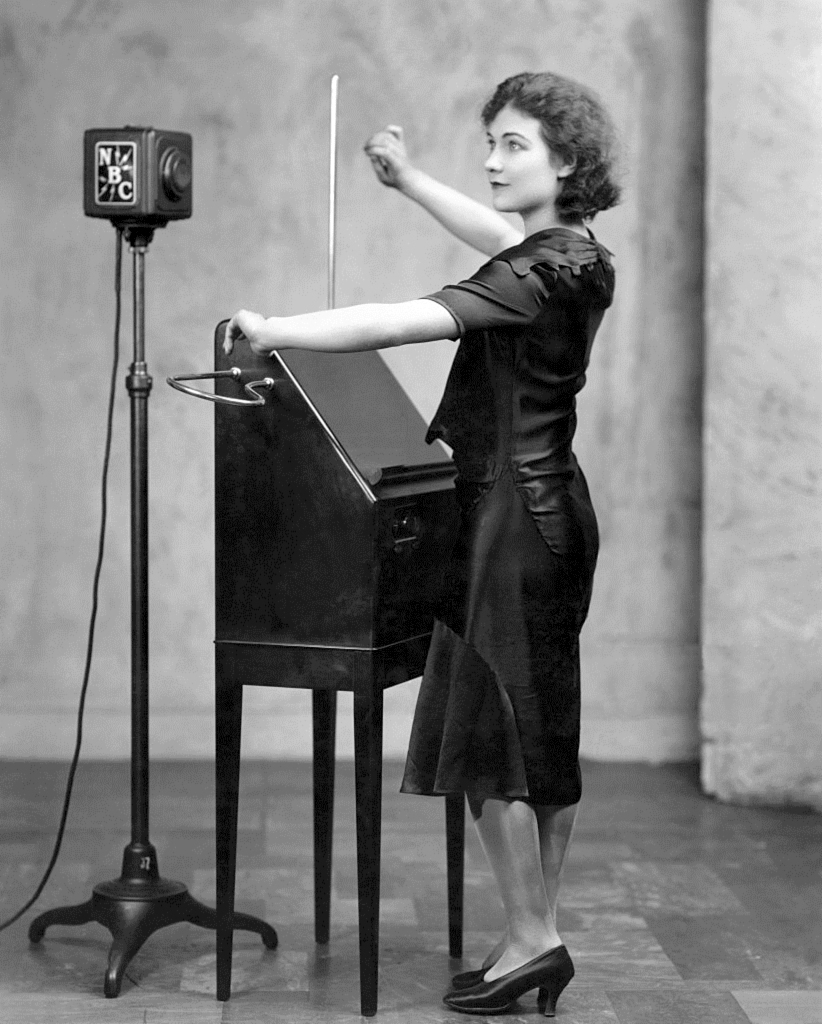
Alexandra Stepanoff plays a theremin for NBC radio in 1930.
From sound to light
Frequency and volume can be translated into color hue and intensity. It just changes the sense we use to perceive them: from ears to eyes. The impact of this change, however, is more than you can think: for sounds our brain applies strict rules about the frequency relationships, so the first note we hear determines if the following notes are in tune or not. If you have a perfect pitch (or absolute pitch), you can even tell if what you hear is a properly tuned note. For the Theremin, capable of generating any frequency, it means that it is very easy to produce frequencies that are not “in tune”. The same does not apply to light color: any sequence of colors is perceived without any “mathematical filter” and any color is good after a first one.
This is a very important aspect of the transition from sound to color because the Color Theremin is not capable of producing “annoying” sequences and basically everything goes. I also decided to use fully saturated colors, relying on the 256 colors palette available from the SmartLEDs strips.
The second concept I put into my light instrument is what in sound is called reverb: any sound does not stop immediately, but fades and mixes with the newer sounds emitted, creating harmonies or dissonances. In light I created a set of bars that expand from a central one into symmetric sides, scrolling the colors in a vertical motion that brings the colors to the edges and then vanish. It is symmentrical horizontally to simulate the binaural perception (stereophony). Depending on the version, the lateral bars might have a faster scrolling than the central, giving a sense of acceleration in the spreading of the colors.
The last concept mutuated from the Theremin is the amplitude, or the intensity of the color. This allows to create patterns and not only colors scrolling on the LED columns. This makes the light instrument a true expressive tool that allows the performer to create dynamic visuals under his full control.
This is an “instrument” that could allow deaf and acoustically impaired people organize visual performances together with musical instruments in mixed bands. This is something I really would like to try, but it needs some sponsors to become real.
The first iteration of my Color Theremin
The portable version with Lidar sensors
Reboots and remakes
The first version was done to impress at Maker Faire 2015 and 3D printing was still a hot topic. The whole project was made with 3D printed parts, from the tubes containing the SmartLEDs strips, to the various boxes, the little notes and all the supports for the tubes. Nothing particularly sophisticated, but still it made the whole thing look very “maker”. The whole design was made to be transportable and I even modified a big portfolio folder to carry the device around.
At that time, the ultrasound sensors were the only affordable distance sensors, but they had a drawback: looking like two eyes, they tempted more than one kid to push the little mesh breaking the sensor. I had spares and in a few days of faire I had to make more than 10 replacements. The time required to measure and the precision were variable and made the whole instrument a little coarse, but as it was making colors and not sounds, no one was complaining.
My search for a better distance sensor came to an end when the Time of Flight (ToF) sensor by ST was release. It was a tiny little device capable of returning with great precision distances from a few mm to almost two meters. The price started at 10 USD, but came down the following years and became my distance sensor of choice. I adapted the code and the hardware design, going to a V 2.0 that I am currently maintaining as the reference design. What changes in the various makes is how the Color Theremin is made a solid frame like the one for Gitex to a portable set of hacked LED Light tubes.
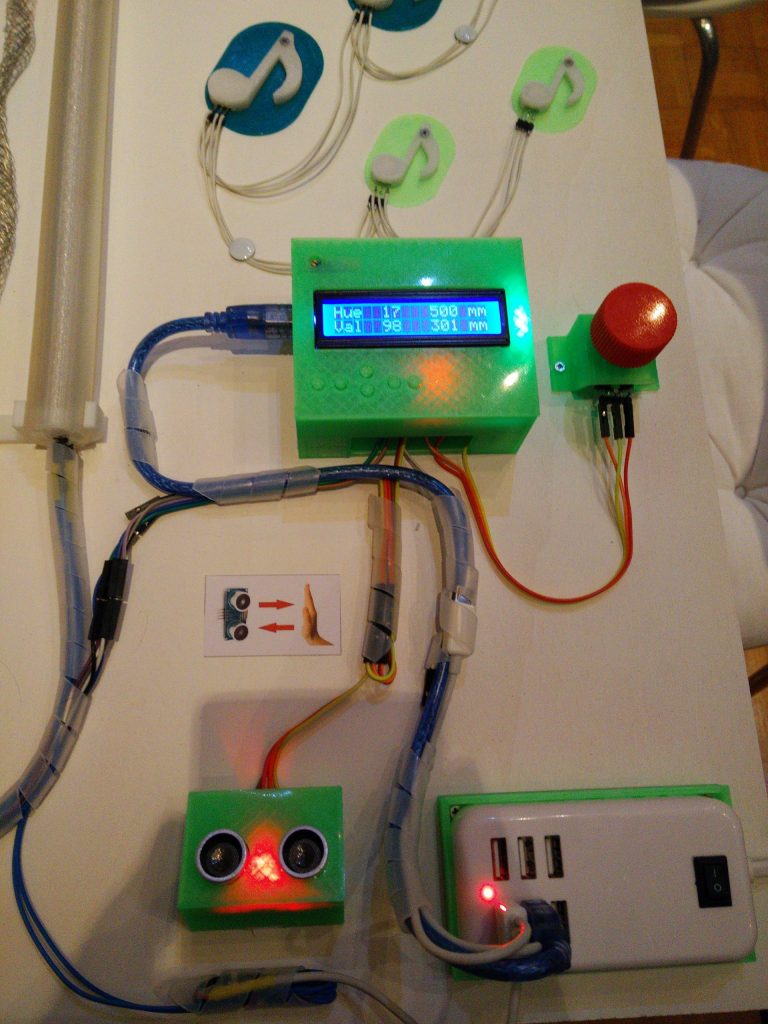
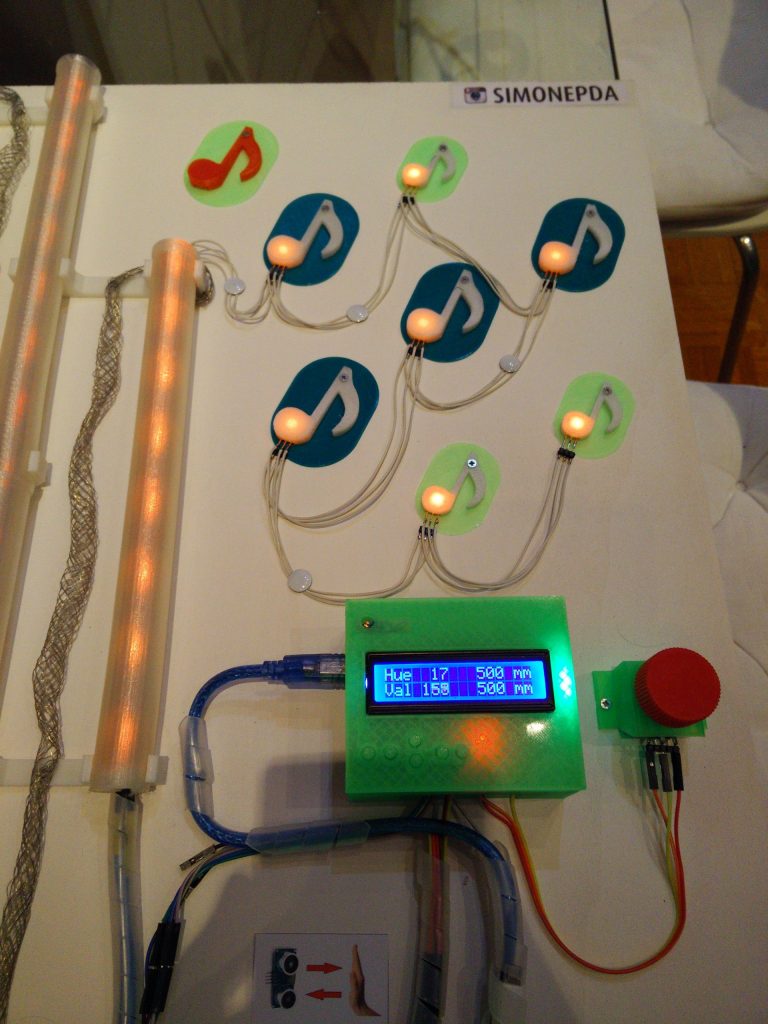
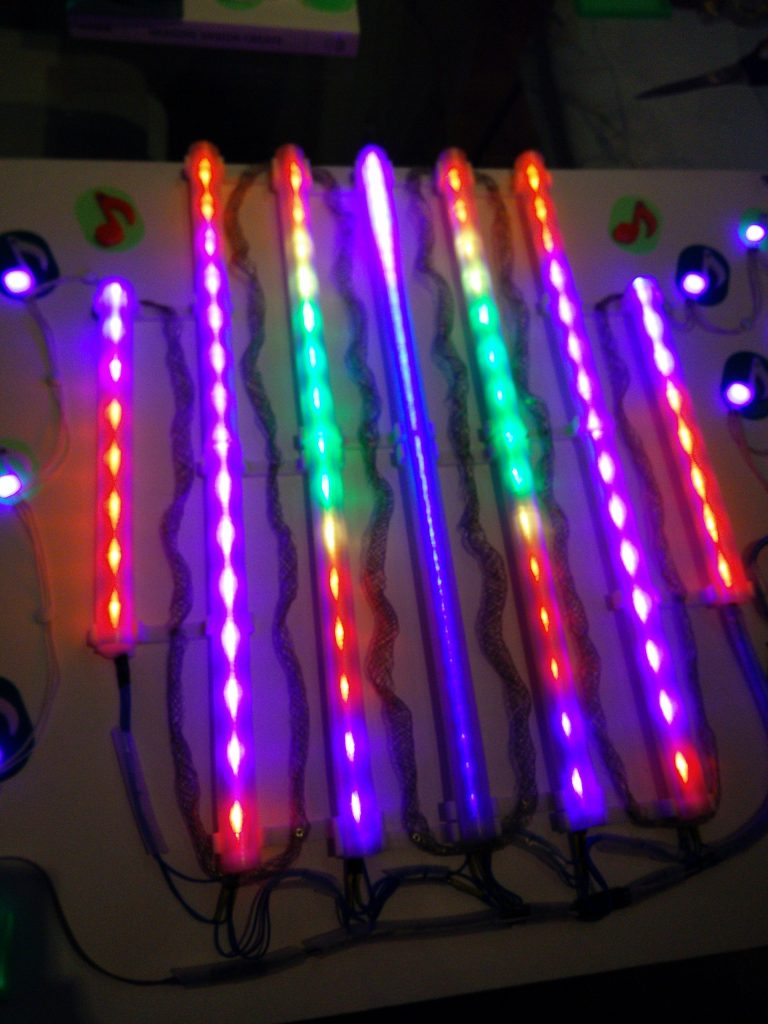
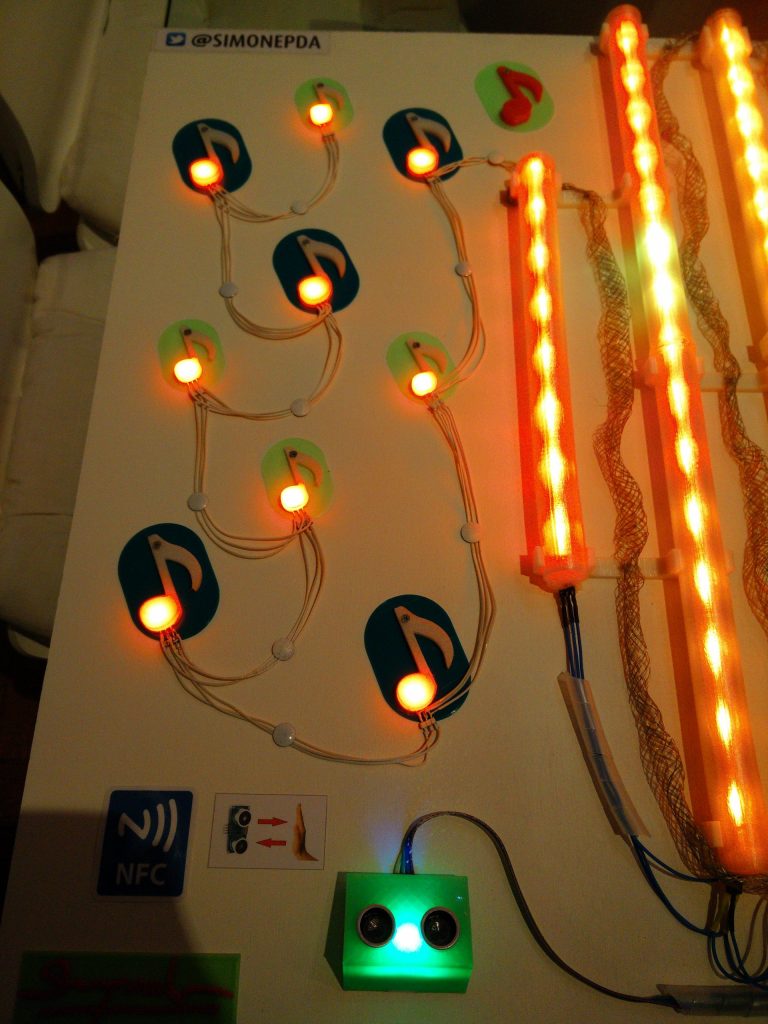
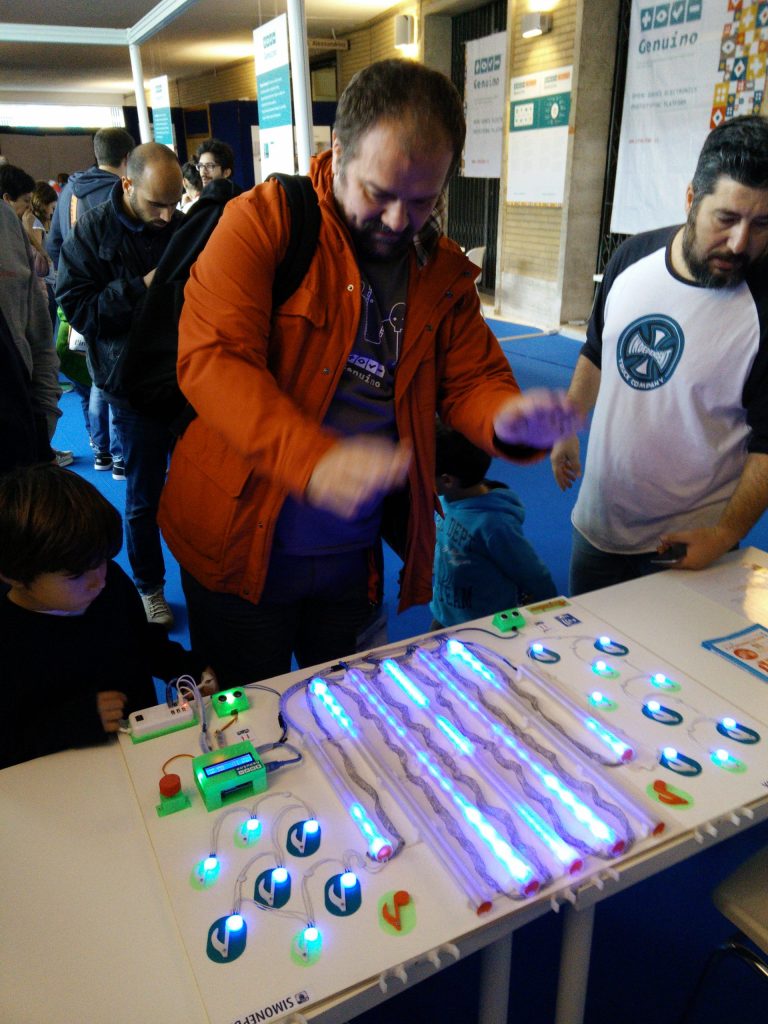
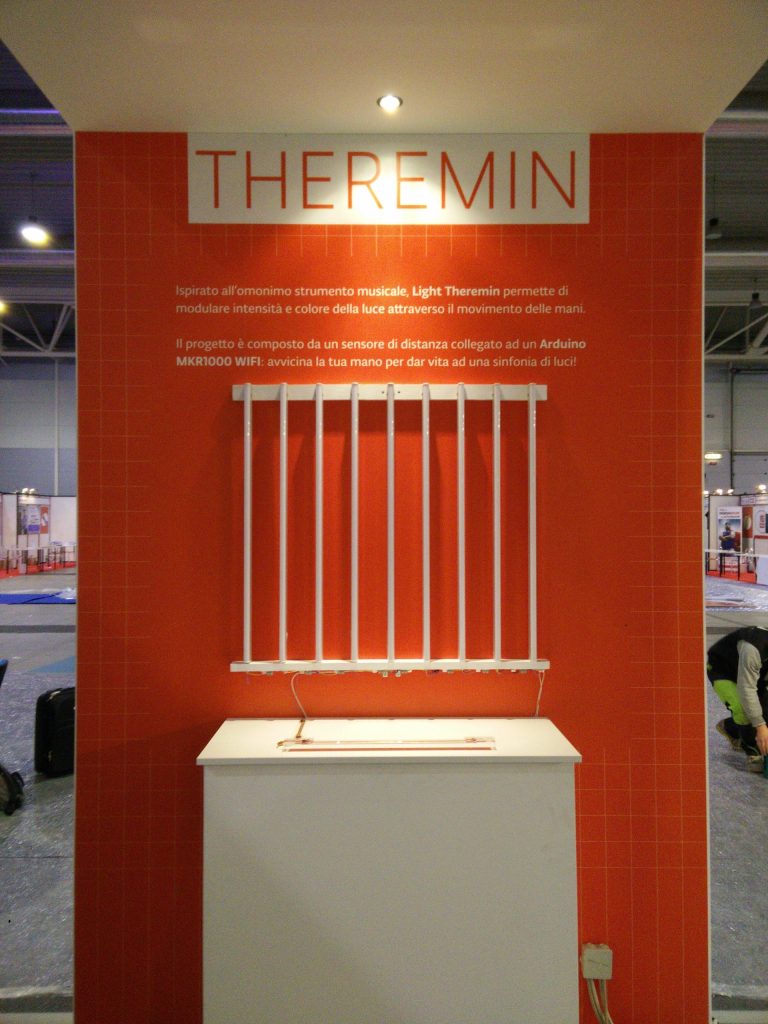
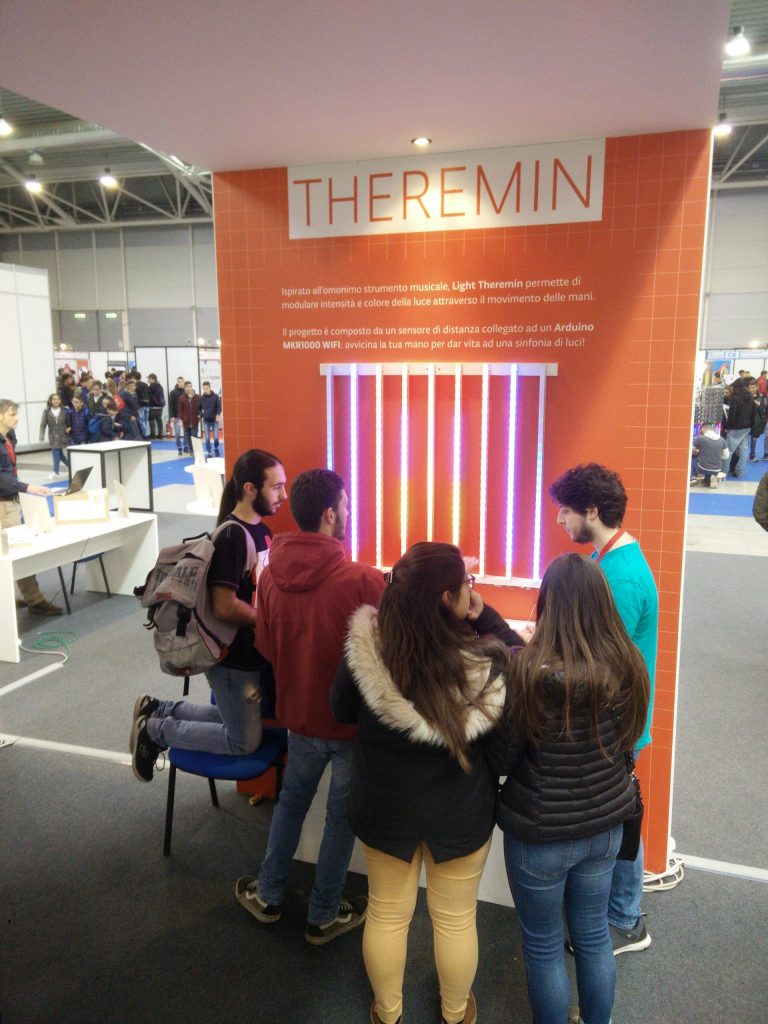
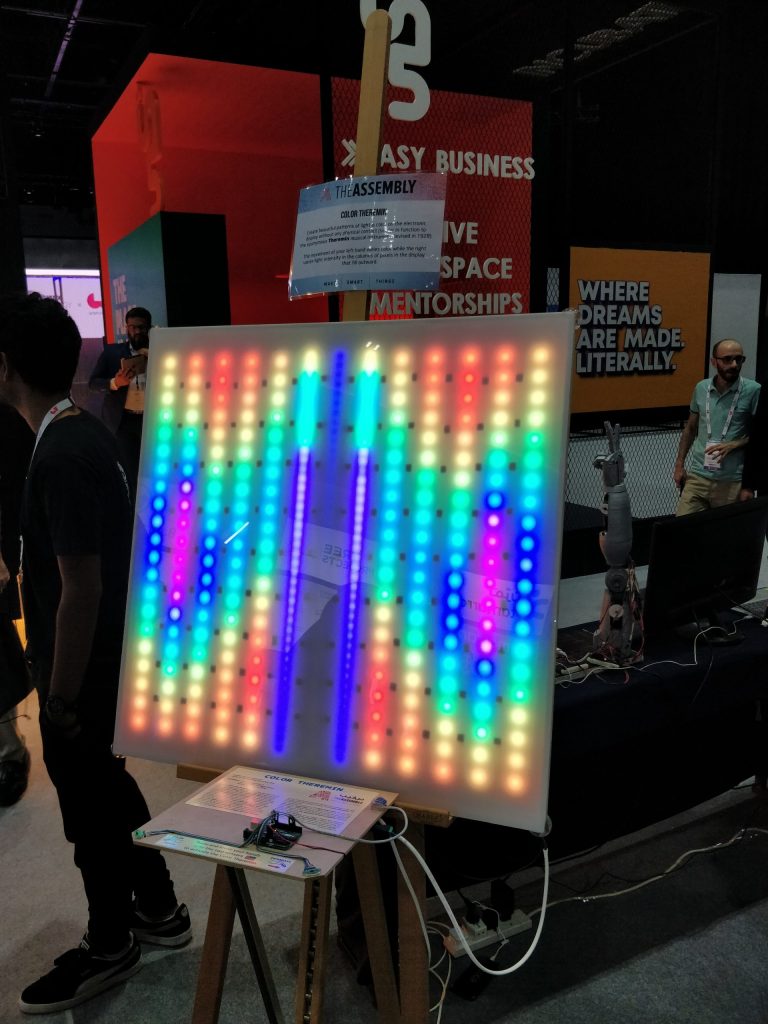
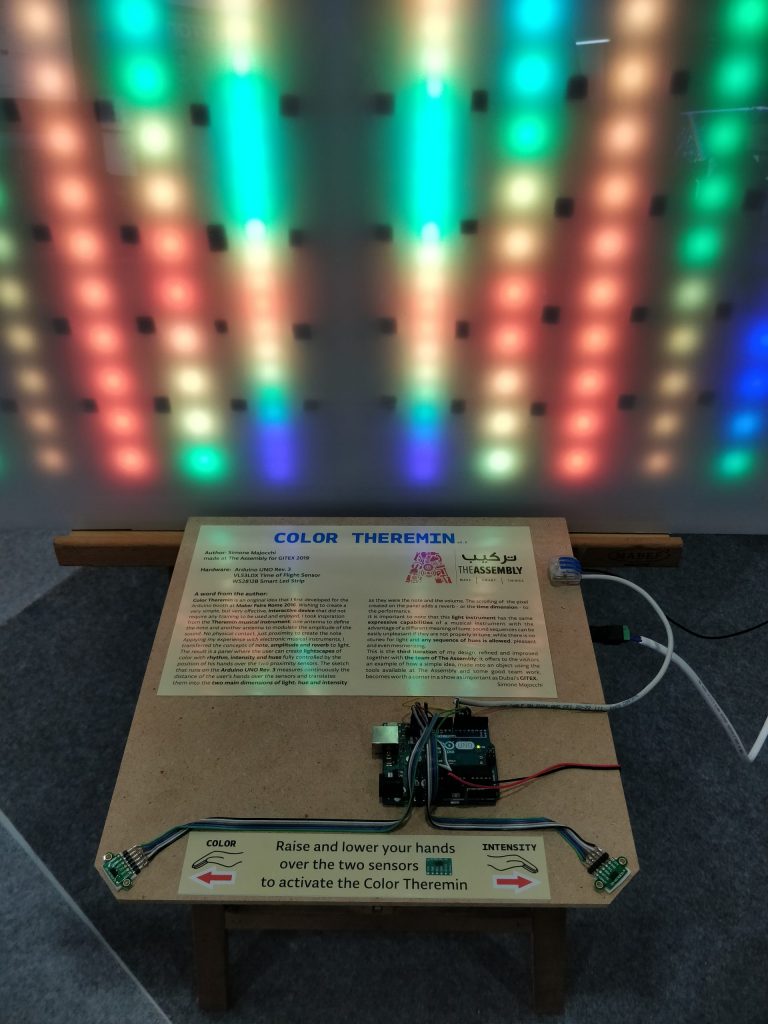
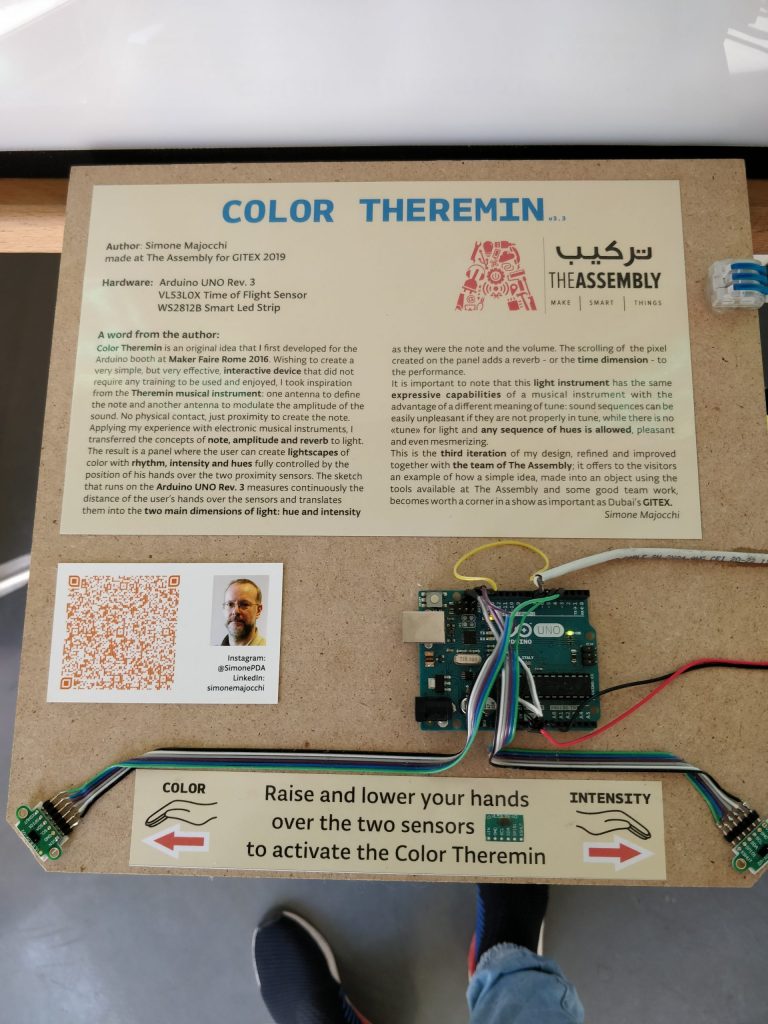
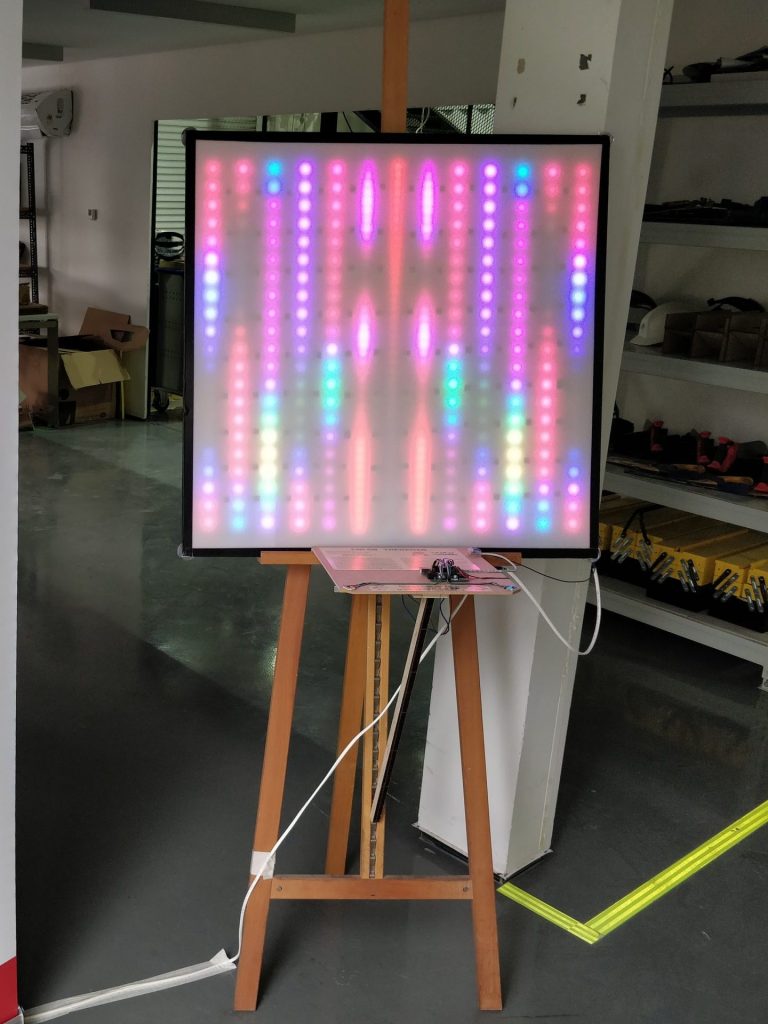
The future of Color Theremin
By design this light instrument is scalable from smaller to way bigger. The number of LEDs and their density can be tailored to the surface to cover and the project was already submitted for some local Light design events, without much luck. I always have a demo unit to show, but I am not putting much effort in promoting it. If you are interested, drop me a message 😉 .
